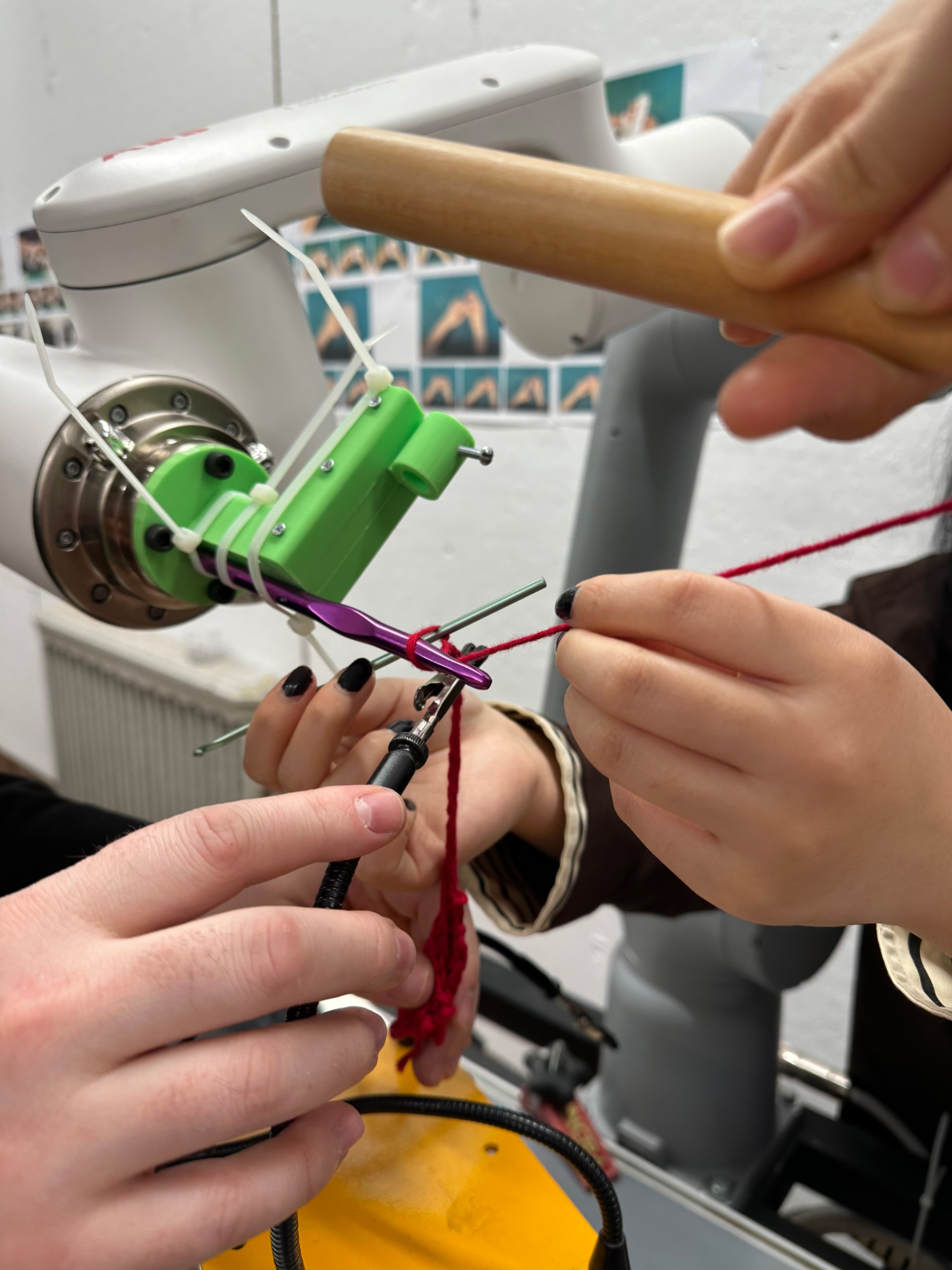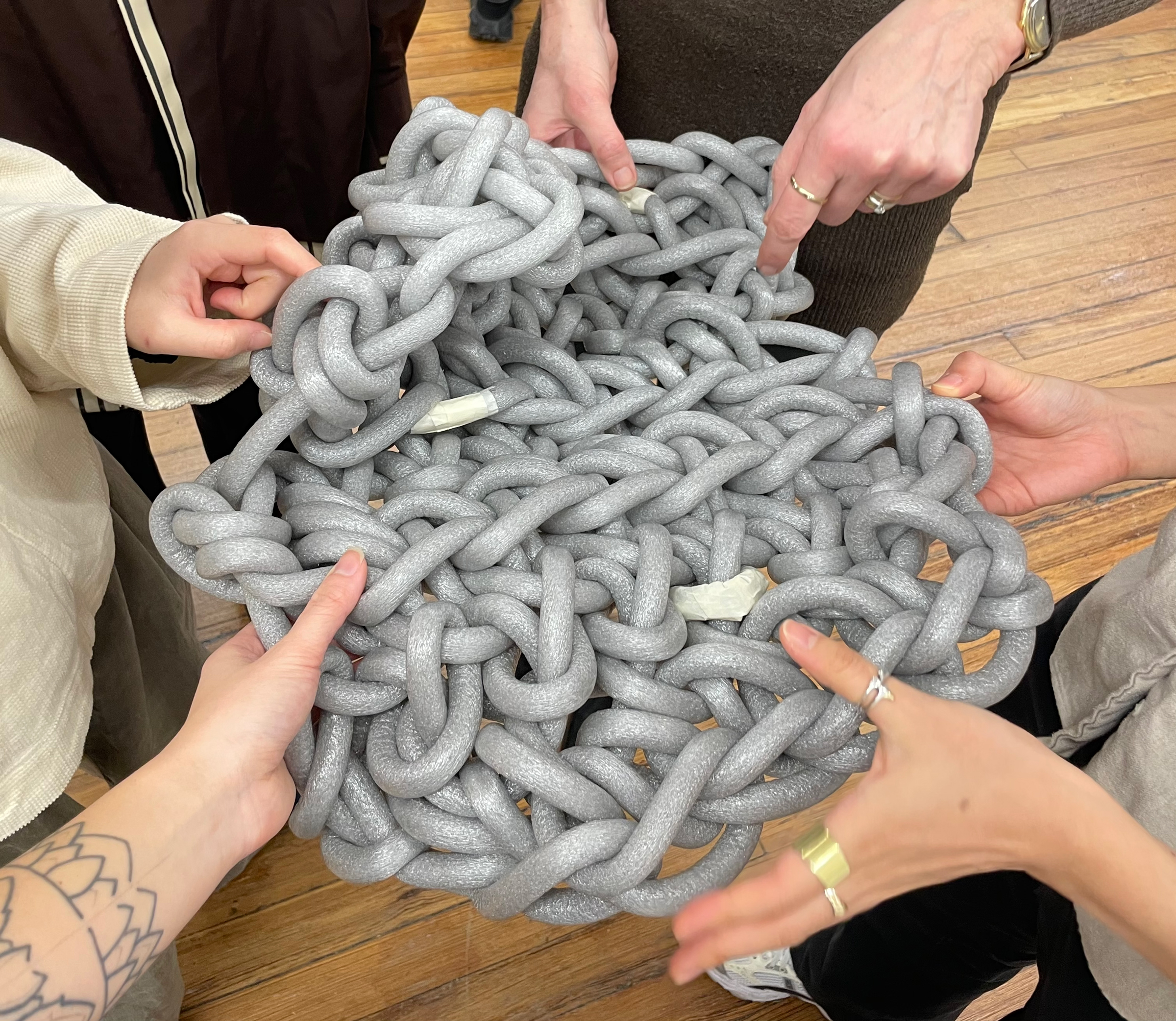Hooks & Loops – The Hyperstitch

Gisela Baurmann, Adjunct Associate Professor, GAUD, School of Architecture
Gregory Sheward, Production Facilities Manager, Robotics Operations, Department of Architecture; Visiting Assistant Professor UA
Aisha Aljassim Alqenaei, MArch GAUD
Heather Besemer-Schulz, MArch GAUD
Tingyu Chang, MArch GAUD
Helena Lenz Ferreira, MArch GAUD
Zeynep Gorken, MArch GAUD
Chai Hwang, MArch GAUD
Jamie Latimer, MArch GAUD
Yingridd Arruda Porto, MArch GAUD
May Xu, MArch GAUD
Emily Young, MArch GAUD
School of Architecture
Hooks and Loops – The Hyperstitch focuses on researching and implementing the potential of crochet as a design method beyond its traditional domestic context. It examines the craft’s topological traits and ductility simultaneously through design research and fabrication. Examining the potential of “weak” structures to flexibly perform in volatile environments, material and scalar shifts in production test crochet stitching at an architectural scale. Robotic fabrication enables the radical material and size shifts to arrive at a versatile design methodology that works at an architectural and engineering scale.
Crocheting activates a single line—the thread—to generate an elastic surface by moving around and through an empty core. The topology of a crocheted fabric is relatively complex: the thread describes an undulating path along each row, the loops of one row being pulled through the loops of the row subjacent to it.
In crochet, it is possible to create a whole surface of multiple elements from one single thread. Inscribed in the technique is the potential to generate a multitude of volumes, strands, cross-references, and volumetric sequences without ever having to interrupt the fiber’s continuous line. Crocheted or knitted fabric specifies local rules of increase and decrease, of temporary pause and subsequent pick up, thus enabling the fabric to splice open and to reunite again later on. It can generate three-dimensional volumes through separating and subsequently braiding, crossing, and back-referencing its own materiality.
In architecture we may apply the syntax of hyperbolic geometry to generate organizations of multiple linkages. When crocheting the hyperbolic plane, the stitches allow for local specificity as well as feedback between local units and the global fabric, resulting in an emergent process of form-making.
In past research the computational analysis of crochet stitch construction was introduced to develop a precise method of moving into a three-dimensional architectural scale, a structural output. Variation of input parameters, such as number of stitches and rows, stitch increase, thread diameter, openings and so on, tested structural, spatial, and material effects. In a series of digital and analogue experiments, specific spatial characteristics of crocheted fabric were generated through both physical fabrication prototypes and computational models.
The current project builds on that research to further bridge analogue and digital investigations of crochet, exploring the fabrication potentials of generating crocheted surfaces collaboratively with a robotic arm. Prototyping custom modifications to the robotic actuator base and head allow for a whole suite of architectural scale of crochet operations, challenging to understand and refine the mechanics of aspects such as tensioning, hook rotation, stitch formation, and stitch variation, to name a few.
In parallel, the project still explores the question of scale through analogue crochet prototyping, as the selection of a large-scale fiber material with adequate flexibility and structural strength is a continuing material science challenge for the project.
The collective envisioned goal is to merge the two lines of research, employing robotics to manufacture large-scale crochet structures –ultimately demonstrating the world of architectural possibilities engendered through the topological potentials of crochet-based construction.


